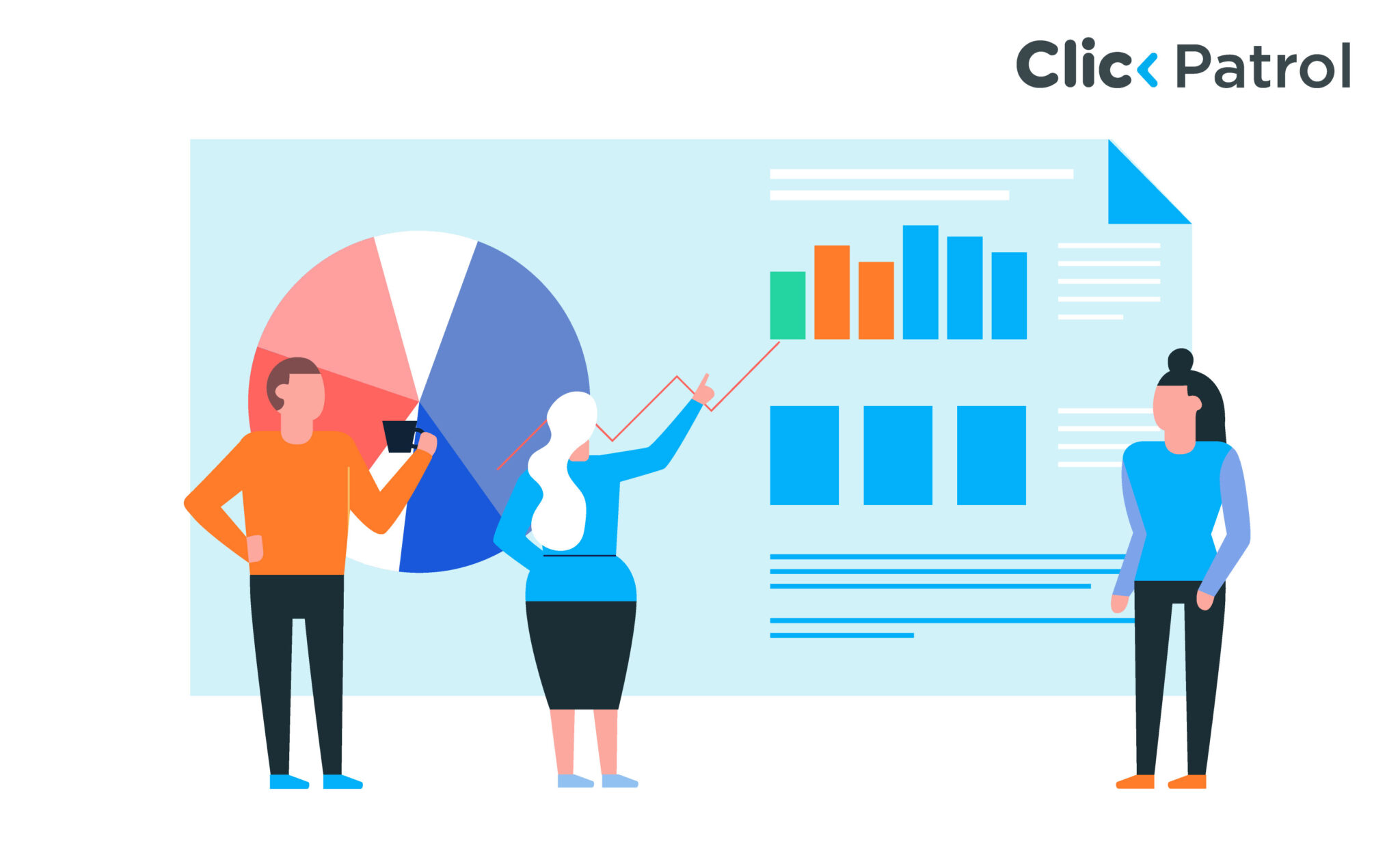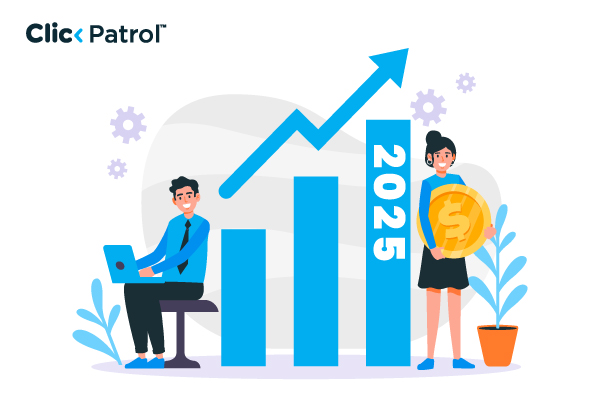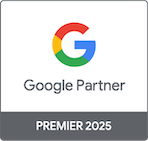Bad ad placements are ads that are shown on low-quality, irrelevant, or fraudulent sites within the GDN and result in wasted spend.
How to stop bad Ad placements and boost ROI with Google Ads placement exclusions
Abisola Tanzako | Oct 17, 2025

Table of Contents
- Why bad Ad placements affect campaign performance
- How to prevent bad Ad placements in Google Ads: 5 Steps
- Step 1: Review your placements report
- Step 2: Add specific URL exclusions
- Step 3: Create shared exclusion lists
- Step 4: Block topics and content categories
- Step 5: Optimize performance max (PMax) campaigns
- Best practices to avoid bad Ad placements for ongoing optimization
- How ClickPatrol helps to detect and block bad Ad placements
- Real-time monitoring:
- Bulk exclusions:
- Proven impact:
- High-trust site focus:
- Performance dashboards:
- Profitability assurance:
- Stop bad Ad placements and boost your ROI
Even the most optimized Google Ads campaigns can waste thousands on poor placements. Ads often appear on irrelevant, fraudulent, or bot-driven sites, consuming your budget before you realize it, significantly hindering your campaign’s performance and ROI.
Bad ad placements are one of the biggest challenges in Google Ads, often wasting budgets and damaging brand image. In 2022, advertisers lost about $54.6 billion to invalid traffic, a figure projected to reach a staggering $72 billion by 2024.
In this comprehensive guide, you will learn how to identify poor ad placements, use Google Ads exclusion tools effectively, and automate optimization with ClickPatrol to protect your Ad budget.
Why bad Ad placements affect campaign performance
Ads placed on low-quality, irrelevant, or fraudulent websites can significantly reduce ROI and hinder your campaign objectives.
Poor placements come in various forms, each posing unique risks to performance.
- Low-quality sites, such as MFA (Made for Ad) pages created solely to generate ad revenue, often deliver little to no user engagement. In some cases, even major brands like Microsoft and Disney inadvertently ran ads on a fake Forbes subdomain, highlighting the potential for dubious activity. These sites account for 15% of wasted programmatic spend, generating high impressions but zero conversions.
- Irrelevant placements occur when ads appear in contexts that don’t align with your target audience. For example, a B2B software ad displayed on a gaming forum or lifestyle blog. Such mismatches contribute to the low 0.77% conversion rate of display ads, with 80% of video ads reportedly being contextually misaligned.
- Fraudulent placements caused by bot clicks or impression laundering pose an increasing threat. Statista estimates ad fraud losses will exceed $172 billion by 2028, up from $88 billion in 2023. Mobile apps are particularly vulnerable, with device farms and SDK spoofing contributing to 25% of fraud cases.
How to prevent bad Ad placements in Google Ads: 5 Steps
Bad ad placements can waste your budget, lower conversions, and harm your brand. Here’s a 5-step guide to prevent them in Google Ads:
Step 1: Review your placements report
- Log in to your Google Ads account and select a campaign with Display Network targeting.
- In the left sidebar, go to Content > Placements and view the report showing where your ads have appeared, including impressions, clicks, CTR, and costs.
- Sort by high impressions and low CTR (less than 0.5%) or zero conversions to identify underperforming placements.
- Export the data to a spreadsheet for deeper analysis.
Step 2: Add specific URL exclusions
- In the Placements tab, check the boxes of underperforming sites (e.g., CPC above average or bounce rate >90%) and click Edit > Exclude Placement.
- Add specific URLs, such as lowqualitysite.com, or use wildcards (e.g., *.mfasite.com) to block subdomains.
- For efficiency, utilize industry resources such as SEER Interactive’s list of over 2,000 known bad placements.
- Use bulk actions to block hundreds of sites or high-risk categories in apps and mobile games.
Step 3: Create shared exclusion lists
To scale your efforts, create reusable exclusion lists:
- Tools & Settings > Shared Library > Exclusion Lists.
- Add URLs, apps, or IP addresses, and apply the list across multiple campaigns or at the account level.
- For example, a luxury brand might exclude gaming sites and discount blogs, while targeting premium publishers such as Forbes or Vogue.
Step 4: Block topics and content categories
Go beyond URLs by blocking entire content categories.
- In the campaign’s Content tab > Exclusions, deselect categories like Adult or Tragedy & Conflict to filter out thousands of irrelevant sites.
- Combine this with negative keywords, such as “free” or “cheap,” to further refine where your ads appear and reduce bad placements.
Step 5: Optimize performance max (PMax) campaigns
Exclusions are critical for PMax campaigns, which automate placements across Google channels.
- Go to Insights > Where Ads Showed to review asset group performance.
- Filter out low-ROI placements and reference Google’s revised Search partner reports (March 2024 onward).
- Create lockout rules for placements contributing >5% of spend with CTR <1%, and review these rules weekly as new GDN sites are added.
Best practices to avoid bad Ad placements for ongoing optimization
Following these best practices can cut wasted spend by as much as 20% while boosting conversions. Moreover, 65% of industries are expected to see measurable improvements by 2025.
- Start conservatively: Begin by eliminating 50–100 underperforming placements initially to avoid overly restricting your reach.
- A/B Test exclusions: Run campaigns with and without exclusions to measure the impact on ROAS and identify the most effective strategies for driving results.
- Layer audience targeting: Combine exclusions with remarketing or in-market audiences to optimize your targeting. This approach can boost performance by 20–30%.
- Monitor viewability: Filter placements with less than 50% viewability using Google Ads metrics to ensure real users see your ads.
How ClickPatrol helps to detect and block bad Ad placements
Google Ads’ native placement exclusion tools are practical but can be time-consuming. They may also miss advanced fraud. ClickPatrol automates this process using artificial intelligence.
It identifies and blocks poor-quality, irrelevant, or fraudulent placements, keeping your ads on trustworthy websites. Key features of ClickPatrol include:
Real-time monitoring:
It’s a machine learning tool that tracks traffic live. It identifies problematic placements, such as bot-generated apps or MFA sites with high bounce rates or suspicious IP addresses. These placements are blocked immediately.
Bulk exclusions:
ClickPatrol integrates with Google Ads for easy bulk exclusions. This saves significant manual work. It also combats click fraud, which can account for up to 22% of global digital ad spend.
Proven impact:
In 2023, ClickPatrol prevented many MFA conversions. This saved users millions of dollars. Globally, it helped prevent over $60 billion in potential ad fraud losses.
High-trust site focus:
ClickPatrol prioritizes placements with viewability over 70%. This follows the 80/20 rule: 20% of placements generate 80% of programmatic results. For example, high-performing mobile app display ads achieve an average viewability of 83.8%.
Performance dashboards:
Users get real-time notifications and dashboards. These track improvements include a 25% drop in CPC from AI-optimized campaigns.
Profitability assurance:
Automation ensures ads are placed on high-value, trustworthy websites; maximizes ROI and campaign success.
Stop bad Ad placements and boost your ROI
Placement exclusions are an effective defense against bad ad placements on low-quality or irrelevant sites. These placements can sabotage your Google Ads campaigns if left unchecked.
Using Google Ads’ native tools alongside AI-powered solutions like ClickPatrol allows you to remove poor placements, safeguard your budget, and improve campaign performance.
Start with a single campaign audit, filter out around 50 low-performing placements, and add ClickPatrol for real-time optimization. Ad fraud is now a billion-dollar problem. In 2023 alone, losses reached $84 billion.
Precision targeting and proactive monitoring are the only ways to stay ahead of the competition. Take control of your ad performance and watch your ROI soar. Book a free demo with ClickPatrol today to see how it can block bad placements and maximize your campaign results.
Frequently Asked Questions
-
What are bad placements in Google Ads?
-
What is the benefit of placement exclusions?
Exclusions funnel budget to high-performing locations, resulting in conversions of up to 65% in maximized sectors. They increase display ad CTRs to a baseline of 0.77%.
-
Is it possible to automate bad ad placements?
Yes, ClickPatrol detects and blocks poor placements in real-time, causing savings of 20-30% on wastage.
-
How frequently should I optimize placements in Google Ads?
Check active campaigns weekly and set automatic rules to pause placements with a spend of more than 5% and a CTR of less than 1%.






